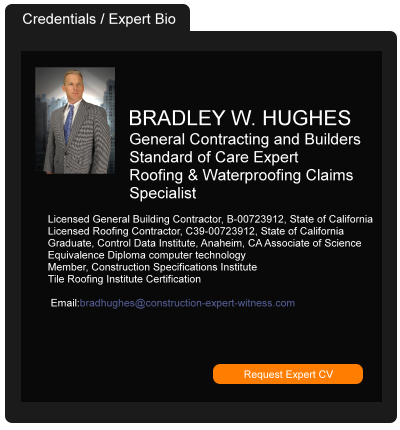Bill Taylor Co-Authors Chapter in Pennsylvania Construction Law Book
October 26, 2017 —
William Taylor - White and Williams LLPBill Taylor, Co-Chair of the Construction and Surety Group, co-authored a chapter in the recently released third edition of Pennsylvania Construction Law: Getting Started, Getting Covered, Getting Paid. The book, published by the Pennsylvania Bar Institute, follows the development of a construction project through contracts, insurance and bonding, performance, claims, warranties and completion, and for troubled projects, termination. Bill's chapter focuses on surety bonds on construction projects in Pennsylvania.
Read the court decisionRead the full story...Reprinted courtesy of
William Taylor, White and Williams LLPMr. Taylor may be contacted at
taylorw@whiteandwilliams.com
Legislation Update: S-865 Public-Private Partnerships in New Jersey Passed by Both Houses-Awaiting Governor’s Signature
July 02, 2018 —
Steven M. Charney & Charles F. Kenny - Peckar & Abramson, P.C.New Jersey is finally close to being among the many states with broad authority to develop or improve public projects through a Public-Private Partnership (P3) delivery method. This contracting model has stimulated growth and improvements in other States and led to the delivery of projects that may not otherwise have happened. Senate Bill 865 (“S-865”), after undergoing some last-minute amendments in a frenzied legislature dealing with budget and other critical issues, has passed in both houses of the Legislature and is waiting for Governor Murphy’s signature, which is expected shortly. The law will be effective 180 days from formal enactment. The administrative framework is now in place to make Public-Private Partnerships a reality in New Jersey.
Reprinted courtesy of
Steven M. Charney, Peckar & Abramson, P.C. and
Charles F. Kenny, Peckar & Abramson, P.C.
Mr. Charney may be contacted at scharney@pecklaw.com
Mr. Kenny may be contacted at ckenny@pecklaw.com
Read the court decisionRead the full story...Reprinted courtesy of
The Prolonged Effects on Commercial Property From Extreme Weather
January 29, 2024 —
The Hartford Staff - The Hartford InsightsAs evidenced by the extraordinary heat in the Southwest, a string of tornadoes in South and Midwest, and heavy rains in California and Florida, 2023 was a banner year for extreme weather. However, 2024 may be no different, which means now is the time for businesses to rethink the way they approach volatile weather, as well as the frequency and severity of storms and natural disasters.
The risks and challenges that businesses face as extreme weather becomes stronger and causes more property damage, requires innovative technology with specialized insurance solutions. Through updated building codes, advancements in technology and meaningful infrastructure improvements, businesses can make a difference in protecting their property and reducing losses.
Stronger Building Codes To Withstand Storms
It is not uncommon to see the destruction that a hurricane or tornado leaves behind. However, stronger building codes are one of the best ways to make sure property can withstand catastrophes. Florida for example implemented changes to its building codes after Hurricane Andrew, and then again in 2007 after the Hurricanes of 2004 and 2005. New construction since then has made houses and buildings significantly more hurricane proof. Buildings constructed 30 years ago were likely built with codes that may have neglected the impact of strong winds from an extreme hurricane or significant rainfall that a storm can bring, especially along the Atlantic and Gulf coasts.
Read the court decisionRead the full story...Reprinted courtesy of
The Hartford Staff, The Hartford Insights
1st District Joins 2nd District Court of Appeals and Holds that One-Year SOL Applies to Disgorgement Claims
June 14, 2021 —
Garret Murai - California Construction Law BlogWe’re beginning to see a trend.
This past year, the 2nd District Court of Appeals, in Eisenberg Village of the Los Angeles Jewish Home for the Aging v. Suffolk Construction Company, 53 Cal.App.5th 1201 (2020), held for the first time that a one (1) year statute of limitations period beginning upon substantial completion of a project applies to disgorgement claims under Business and Professions Code section 7031. In San Francisco CDC LLC v. Webcor Construction L.P., the 1st District Court of Appeals became the second Court of Appeals in the state to hold that a one (1) year statute of limitations beginning upon completion or cessation of work on a project applies to disgorgement claims under Business and Professions Code section 7031.
The San Francisco CDC LLC Case
The Defect Action
In September 2005, San Francisco CDC LLC entered into a $144 million construction contract with Webcor Construction, Inc. doing business as Webcor Builders to build the InterContinental Hotel in San Francisco, California.
Read the court decisionRead the full story...Reprinted courtesy of
Garret Murai, Nomos LLPMr. Murai may be contacted at
gmurai@nomosllp.com
Review of Recent Contractors State License Board Changes
February 27, 2023 —
Alexander Moore - Kahana FeldCalifornia’s Contractors State License Board (CSLB) was established in 1929 to protect California residents through licensing and regulating contractors working in the state. Today, the CSLB licenses approximately 290,000 contractors, utilizing forty-four different classifications. Each licensing classification specifies the type of contracting work permitted by that classification.
The CSLB website (www.cslb.ca.gov) contains a wealth of information for contractors and non-contractor consumers alike. Consumers can use the website’s features to check the history and business information of contractors, searching via license number, business name, or individual name. License applicants can use the website for instructions and forms for the application process. Contractors can use the website for renewals, regulations, and various resources.
One the CSLB’s most important roles is assisting contractors with keeping track of the multitude of state regulations, and periodic changes thereto, that apply to those in the construction trades. The CSLB posts periodic Industry Bulletins which provide helpful guidance and reminders of important construction topics. At year end, the CSLB issues a bulletin to update licensees of the changes to California Law that will become effective on the first of January in the coming year. Below are four of the more interesting and impactful statutory changes.
Read the court decisionRead the full story...Reprinted courtesy of
Alexander Moore, Kahana FeldMr. Moore may be contacted at
amoore@kahanafeld.com
Federal District Court Addresses Material Misrepresentation in First Party Property Damage Claim
August 26, 2024 —
James M. Eastham - Traub LiebermanIn Pittsfield Dev. LLC v. Travelers Indem. Co., 2024 U.S. Dist. LEXIS 117530 (N.D. Ill. July 3, 2024), the United States District Court for the Northern District of Illinois addressed an alleged material misrepresentation by an insured during the course of the adjustment of a water loss claim at an insured property. Subsequent to a pipe burst event which caused damage to a number of the floors in the insured building, the insured submitted a claim to Travelers and also submitted, with the assistance of a retained public adjuster, a damage estimate of the damages at the property. Included within the estimate submitted by the insured was a line item for "Lead Paint & Asbestos Removal" with a corresponding dollar amount of $1,140,000. It was this line item which formed the basis of Travelers' claim of misrepresentation.
At his deposition, the public adjuster testified that the $1,140,000 figure was an oral estimate received over the phone from an asbestos remediation company. Travelers disputed the testimony and contended that no such estimate was ever provided. For support, Travelers pointed to deposition testimony from a remediation company employee that while rough estimates were occasionally given verbally, the largest over the phone estimate she could recall was in the $20,000-$25,000 range. It was also disputed that the company would ever provide an oral quote of that magnitude sight unseen, especially since the largest project the remediation company had ever completed was less than $250,000.
Read the court decisionRead the full story...Reprinted courtesy of
James M. Eastham, Traub LiebermanMr. Eastham may be contacted at
jeastham@tlsslaw.com
Insurer Must Produce Documents After Failing To Show They Are Confidential
January 19, 2017 —
Tred R. Eyerly – Insurance Law HawaiiThe Colorado Supreme Court ordered the insurer to produce documents after failing to demonstrate the documents contained were trade secrets. In Re Rumnock v. Anschutz, 2016 Colo. LEXIS 1228 (Colo. Dec. 5, 2016).
Stephen Rumnock was involved in an auto accident with an uninsured driver. Rumnock brought negligence claims against the driver and uninsured/underinsured motorist claims against his insurers, including American Family Insurance Company. American Family initially refused to pay benefits, but eventually paid him policy limits. Rumnock then amended his complaint to add bad faith and abuse of process claims against American Family.
Read the court decisionRead the full story...Reprinted courtesy of
Tred R. Eyerly, Insurance Law HawaiiMr. Eyerly may be contacted at
te@hawaiilawyer.com
Construction Defect Coverage Barred Under Business Risk Exclusion in Colorado
February 14, 2013 —
CDJ STAFFA federal court in Colorado recently applied the business risk exclusion to a construction defect case. Aaron Mandel and Stevi Raab of Sedgwick Law discuss this in Construction Defect Coverage Quarterly. The court found that the business risk exclusion barred coverage for an underlying construction defect. In the construction defect case, the Creek Side at Parker homeowners association sued the developer and builder. One such alleged defect was that “the plumbing contractor’s faulty installation of sewer and water lines damaged the lines themselves, caused surrounding asphalt and concrete to crack and deteriorate, and resulted in water intrusion.”
The court concluded that this damage to non-defective work was an occurrence, but the exclusion in the contract covered only property damage that occurred “while the work is ongoing.” The court concluded that the business risk exclusion barred coverage.
Read the court decisionRead the full story...Reprinted courtesy of


































































